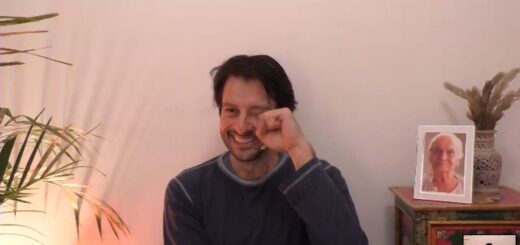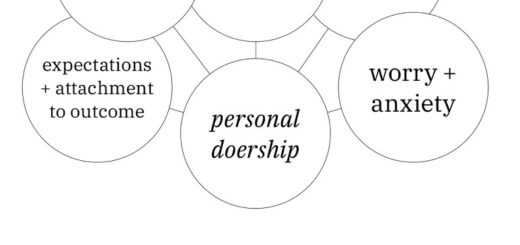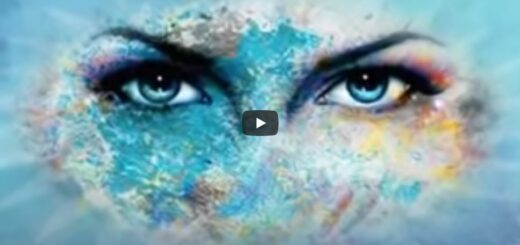Atma Bodha
Atma Bodha – A Treatise on the knowledge of Atma
Francis Lucille mentions the Atmabodha in “The Perfume of Silence” on page 83.

wikipedia:
ātma-bodha (sanskrit: आत्मबोधः ) is a short sanskrit text attributed to adi shankara of advaita vedanta school of hindu philosophy. the text in sixty-eight verses describes the path to self-knowledge or the awareness of atman.
1. This treatise on awakening to our real Self is composed for those who have all but lived out the consequences of past actions, have attained equanimity, have mastered their desires, and who seek final liberation.
2. Of all means, understanding alone can bring about liberation; as without fire there can be no cooking, so without knowledge of the truth there can be no real emancipation.
3. Action cannot remove ignorance; but knowledge disperses it as light disperses darkness.
4. Atman, our real self, seems to be veiled by ignorance, but the moment ignorance is destroyed, our true nature shines forth, like the sun when clouds drift away.
5. After the mind, deluded by ignorance, has been purified by higher reasoning, that higher reasoning disappears, as the berry of the Kataka disappears after it has purified water.
6. This world, troubled by desires, aversions, and other poisons, is like an image in a dream. For as long as the dream lasts, the image appears to be real; but on awakening it vanishes.
7. The world appears real, just as an oyster shell appears to be silver, but only for so long as Brahman, the ultimate reality, the one without a second, remains unknown.
8. Brahman, which is being, truth and intelligence, comprehends every living and inanimate thing within itself, penetrating and permeating all like a thread which holds beads together.
9. The supreme being appears manifold because of diverse superimpositions; but once these adventitious attributes are removed, its inherent oneness shines forth.
10. In consequence of these diverse attributes, a variety of concepts and limitations are superimposed onto Atman, just as a variety of tastes and colors are attributed to water.
11. The physical body, constituted by the union of the five elements, subject to the law of cause and effect, is thought to be the seat of pleasure and pain.
(According to the Indian tradition, the five constitutive elements of the physical universe are earth, water, fire, air, and space.)
12. The subtle body, which is not constituted by the five elements, but by the union of the five currents, the ten organs, manas (the organ of feeling),and buddhi (the organ of thinking and perceiving),is the instrument of subtle perceptions.
13. Ignorance, which can never be found in the present, and is therefore illusory, is the origin of causality. This ignorance differs essentially from that triplicity of attributes (being awareness and bliss) which is the immediate experience of our self.
14. In union with the five sheaths this pure self appears to take on the nature of the one or the other, just as a crystal reflects the blue or other colors of objects which come near it.
(The five sheaths veiling the ultimate self are annamaya kosha, the sheath of gross matter, manomaya kosha, the sheath of the emotions and feelings, vijnanamaya kosha, the sheath of the thoughts, pranamaya kosha, the sheath of the vital energy, and anandamaya kosha, the sheath of bliss.)
15. Pure awareness must be disengaged by intense investigation from the sheaths within which it is enveloped, as a grain of rice is separated from its husk.
16. Although our self permeates everything, it is not manifested everywhere; it manifests itself in the mind just as an image is reflected in a polished surface.
17. This Atman must be distinguished from external perceptions, bodily sensations, feelings, and thoughts. It must be directly seen as the eternal witness of these activities as a king is seen watching over his ministers.
18. When the organs of sense are in action it appears to the ignorant that it is his self which is acting, as the moon itself appears to be moving when clouds pass across it.
19. The body, the organs of sense, manas, and buddhi, accomplish their respective functions under the watchfulness of the self, just as men accomplish their affairs by the light of the sun.
20. Qualities or acts of the body and the organs of sense are attributed to our self which is pure life and intelligence through a lack of discrimination, just as the color blue and other properties are attributed to the sky.
21. Emotions and other faculties which belong to manas are attributed to our Self through ignorance, as one attributes the agitation of waves in water to the moon whose image they reflect.
22. Thoughts given rise to by passions, desire, pleasure, or pain, dwell in buddhi whenever buddhi is present; in the state of deep sleep buddhi ceases to exist, and they likewise disappear.
23. As light is the peculiar property of the sun, freshness of water, heat of fire, so according to its nature, Atman is essentially life, intelligence, splendor, eternity, and purity.
24. Atman, which is being and awareness, is distinct from buddhi; when these are identified with one another through ignorance, one says “I think”, “I perceive”.
25. The changing mind cannot know our changeless self; the illusory personal entity, deluded into thinking that it knows things other than itself, says “I act”, “I perceive”.
26. If one falls into the error of supposing oneself to be an individual entity, as one might suppose a rope to be a snake, one becomes frightened; but as soon as one understands “I am not a person, but the ultimate background of all beings”, one is released from all fear.
27. Atman manifests buddhi, manas, the sense organs, and the body as a lamp illuminates a vase and other objects; but the selfaware Atman is not illuminated by inert objects.
28. Our self, whose special property is awareness, does not require an external conscious entity for it to be known, as a lamp, shining with light of its own, does not require another lamp to make itself visible.
29. Having removed the adventitious superimpositions by understanding “I am not this, I am not this”, let the identity of our Self with the ultimate reality be experienced by means of the sacred statements.
The four sacred statements “I am Brahman”; “Thou art that”, etc. have the power to take a disciple to the direct recognition of Brahman when used by a guru in appropriate circumstances or when meditated upon by a disciple in accordance with his guru’s instructions.
30. All that is made of matter is illusion. It is perceived and, like bubbles, it is impermanent; but that which is neither perceived nor impermanent must be recognized as our pure self which says “I am Brahman”.
31. Not being the body, I am not subject to birth, old age, deterioration, or death; not being the organs of perception, I am not affected by their objects, such as sound, etc.
32. Not being the mind, I do not feel grief, desire, hatred, fear, or other emotions. As established by the traditional texts, I AM, even in the absence of the vital currents, even in the absence of the mind, in absolute purity.
33. From my eternal nature are born the vital currents, the mind, the organs of sense, space, air, fire, water, and earth which constitute all existence.
34. I am without quality, without activity, eternal, without volition, without soil, without change, without form, emancipated forever, perfectly pure.
35. I am like space, penetrating all things within and without, I am without defect, the same throughout; imperturbable, immaculate, immovable.
36. That which is eternal, unblemished , free, one, happy, without duality, and existing by itself that which is awareness, infinite, and the supreme Brahman, that I am.
37. This thought, “I am Brahman”, constantly entertained, disperses the hallucinations born of ignorance, as medicine disperses sickness.
38. Seated in a solitary place, free from his desires and senses, let man contemplate this Atman, one and infinite, without allowing his thoughts to stray elsewhere.
39. The visible universe being merged in awareness, let this man, purified through understanding, constantly contemplate the one Atman, luminous yet invisible.
40. Knowing the highest, he rejects all else, and remains firmly united with his selfluminous background, which is being, awareness, and bliss.
41. In the ultimate reality there is no distinction between perceiver, perceiving, and perceived. Our supreme self is one, conscious, blissful, and shines by itself.
42. When meditation rubs diligently against the self, the flame which such friction produces burns up all ignorance.
43. When understanding disperses darkness, the light of Atman shines forth, dazzling as the sun.
44. Our true nature is always present but it is rendered apparently unavailable by ignorance. Once that ignorance is removed, it shines forth and is again available, like the jewels around the neck of a person who had forgotten they were there.
45. It is an error to take the personal entity for the supreme self, just as it is an error to take a post for a man. When the true nature of the person has been recognized, the notion of personal entity disappears.
46. The higher intelligence arising from insight into the selfluminous Atman completely destroys the ignorance which says “I am this” or “that belongs to me”, just as the light of the rising sun dissipates the darkness of the nocturnal sky.
47. The yogin having achieved perfect discrimination contemplates all things as subsisting in himself, and thus, by the eye of knowledge, discovers that all is this one self.
48. He knows that all this changing world is awareness, or that beyond Atman there is nothing; as all varieties of vase are clay, so all things he sees are awareness.
49. He knows this who, free from the notion of being a person, rejects the limited superimpositions he previously believed himself to be, and becomes one with his essential nature, being, awareness, bliss, just as the chrysalis loses its former nature to become a bee.
50. After having traversed the ocean of illusion, and having destroyed the monsters with which it is infested, the yogin sinks into tranquility, his heart filled with joy.
51. Renouncing attachment to external impermanent pleasures, and totally fulfilled with happiness originating from his own self, he shines with inward light like a lamp sheltered beneath a glass.
52. The silent truthknower, although apparently subject to the conditions of the body, is not affected by them just as space is not affected by the objects it contains. Knowing everything, he conducts himself as though he knows nothing and passes on like the wind, detached from all things.
53. From the moment in which the superimpositions are removed the truthknower enters immediately into that which permeates everywhere, as water in water, air in air, fire in fire.
54. The fulfillment after which there is nothing to desire, the happiness beyond which there is no greater happiness, the understanding above which there is no higher understanding, may one know that is Brahman!
55. The object of vision, beyond which no further vision can be desired, the being in union with which no further birth is possible, the knowledge beyond which one needs no further knowledge, may one know that is Brahman!
56. That which fills all superior, intermediate, and inferior worlds, being, awareness, bliss, one without a second, infinite, eternal, may one know that is Brahman!
57. That which is designated in the Vedantic texts as the timeless being which renders illusory all which is not Him, that permanent bliss, may one know that is Brahman!
58. Admitted to a portion of the bliss of that being which is eternal happiness, Brahma and the other gods attain a partial happiness.
59. All things rest in Brahman and He moves all things; He is universally diffused through everything, like butter in the mass of milk.
60. That which is neither small nor large, neither short nor long, neither subject to birth nor death, that which is without form, without qualities, without color, without name, may one know that is Brahman!
61. That by the splendor of which the sun and the stars shine while not being illuminated by them, that which illuminates all things, may one know that is Brahman!
62. Penetrating everywhere within and without, illuminating the whole universe, Brahman shines from afar like a globe of iron rendered incandescent by a flame.
63. Brahman is not of this world; nothing in reality is, but Him. If anything appears to be other than Him, it is but a vain show, like a mirage in the desert.
64. All that is seen, all that is heard, is Brahman. Through understanding this, Brahman is contemplated as the real, aware, nondual being.
65. The eye of knowledge contemplates the being which is life, intelligence, and allpervading happiness; but the eye of ignorance cannot contemplate That, just as a person who is blind cannot perceive the shining sun.
66. The mind, enlightened by sacred tradition and other means, warmed by the fire of knowledge, and freed from all impurities, becomes brilliant as gold purified by fire.
67. When Atman, the sun of understanding, rises in the space of the heart, it disperses darkness; permeating all and sustaining all, it shines, and all is light.
68. He who undertakes the pilgrimage towards his own self, the unique Atman, going everywhere without regard to the state of the sky, the country, or the weather, indifferent to heat and cold, and acquiring eternal happiness; free from impurity, such a one becomes all-knowing, all-pervading and immortal.



